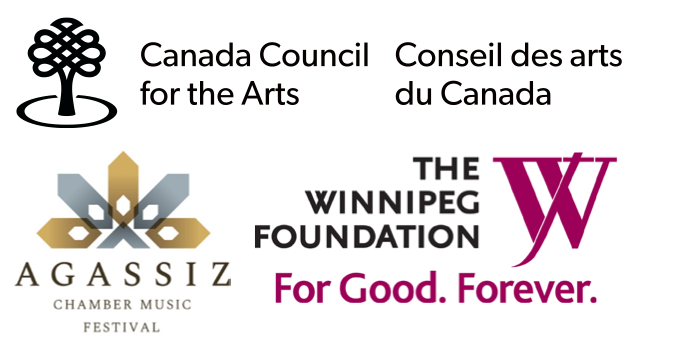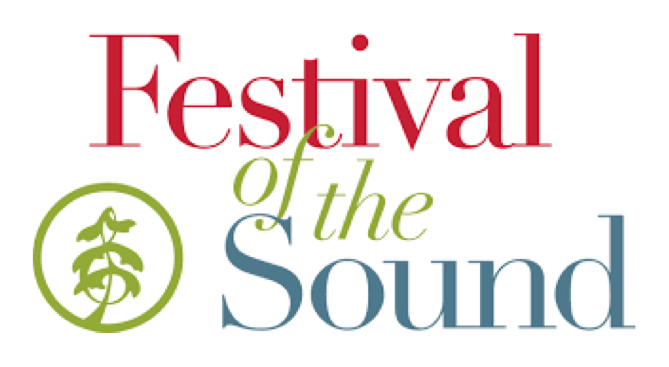Sounding Thunder, the Song of Francis Pegahmagabow is a musical journey into the life of the renowned Ojibwe WWI sniper and decorated officer of the Canadian military, Francis Pegahmagabow. Composed by Tim Corlis and written by Ojibwe poet Armand Garnet Ruffo (Queen’s Associate Professor in English, Cross-appointed with Languages, Literatures and Cultures), Sounding Thunder is a complex work divided into three acts, exploring Pegahmagabow’s early years immersed in the world of the Anishinaabe spirits, his extraordinary accomplishments in the trenches of WWI, and finally his political life as Chief of the Wausauksing Ojibwe and founder of the early Indigenous political movement in Canada.
Written for multiple roles, both human and non-human, Sounding Thunder draws upon the memoirs of Pegahmagabow himself, family memories, and historical sources to introduce spectators to a little- known side of Canadian history while offering a fascinating story and a dynamic musical experience. A multi-disciplinary production, it was produced by Festival of the Sound, Artistic Director James Campbell, a Canada 150 project.
Since it’s premiere in 2018, the production has toured twice at music festivals across Ontario. One of the most noteworthy of these performances was at the Isabel Bader Theatre in Kingston (ON) as part of the Human Rights Arts Festival. Former Chief Justice, and current Chancellor of Queens University, Murray Sinclair attended the performance and spoke following the show on the importance of Francis’ Pegahmagabow’s story for Canada. Since then, the production has become a compelling teaching tool for Ontario school history programs, with numerous 2023 Canada Council-funded performances for primary and middle-school age audiences. In June 2024, the Agassiz Chamber Music Festival of Winnipeg mounted the production, for the first time outside of Ontario.
The show itself is 60 minutes long, featuring a troupe of 4 actors accompanied by a small orchestra. Three of the actors have close family ties to Francis’ story, with roots in the reserve communities of Shawanaga First Nation (Francis’ birth-place) and Wasauksing First Nation (Francis’ home community). Notably, the role of “narrator” is played by Brian McInnis, great-grandson of Pegahmagabow and author of the book Sounding Thunder, the Stories of Francis Pegahmagabow. The show is normally staged with lighting and features a visual backdrop projected onto a 30ft-wide by 10ft- high projection screen.
– notes by Armand Garnet Ruffo
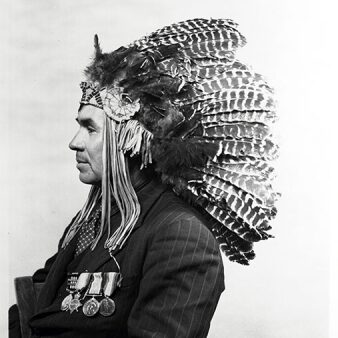
HON. MURRAY SINCLAIR
Excerpts from the speech given following the performance at the Isabel Bader Centre, Kingston, Ontario – August 2, 2022
“As indigenous young people growing up in this society, for many generations now we have had so little that society has been prepared to acknowledge that we should be proud of. So only recent generations, one or two, maybe three, where we have, through our own struggles been able to find those things that make us proud of what our ancestors accomplished and what their ancestors accomplished about what our people accomplished, and the stories of our creation, the stories of connection to the creator, our connection to the earth, our connection to the spirit world, our connection to all of those things told with this story. And this story is important for all of those reasons…”
– Hon. Murray Sinclair
Chancellor, Queens University, Kingston, ON
Chair, Truth and Reconciliation Commission
Senator Emeritus
Chief Justice Emeritus
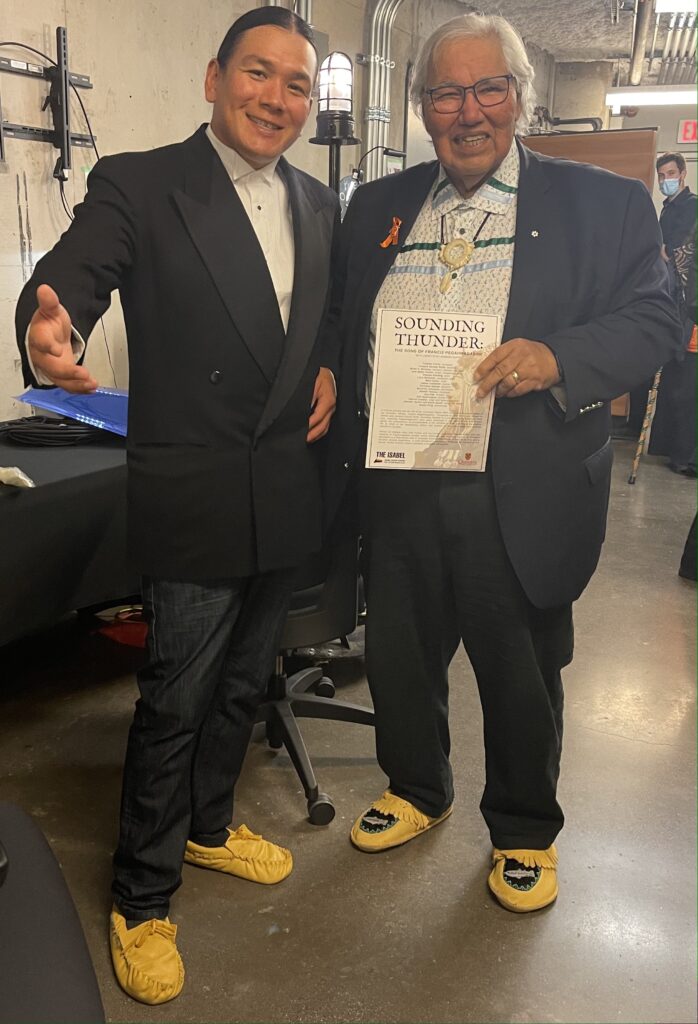
REVIEWS

“This three-act show is about 80 minutes long. It is worth every one of those minutes of attention… “
“Campbell commissioned Sounding Thunder. It was a bold move, one that deserves its own standing ovation.”
“Assembling some of Canada’s finest performers to make it shine made it even more compelling. If we can get this kind of art to mend the injustices of several centuries, maybe truth as well as reconciliation actually stand a chance. “
– John Terauds, Toronto Star

“. . . moving and deeply thought provoking and one of the best pieces created as a conscious contribution to Truth and Reconciliation that I have experienced.”
“The music was essentially atmospheric but much more than just a background. It’s a colourful and occasionally challenging score with Indigenous elements well integrated. It concludes with a song by Jodi that had the audience on their feet joining in.”
– Opera Ramblings

“Sounding Thunder: the Songs of Francis Pegahmagabow showed how collaboration should be done, and how successful the results can be when respect and listening are woven into the creative fabric.”
“Ruffo blends dry historical fact and military detail with poetic, mystical and spiritual elements that allude to Pegahmagabow’s traditional culture and belief system, his roots in clan and family, and the wild, watery beauty of his homeland near Parry Sound.”
“Jodi Baker, First Nations singer and drummer, performed a prologue honouring the four directions. She also ended the piece with a traditional travelling song, gently sending “Peggy” on his final journey to the spirit world. The audience, which included many Indigenous guests, rose to their feet to sing along. It was spontaneous and authentically moving. “
– Natasha Gauthier, Artsfile
QUOTES FROM GRADE 10 STUDENTS
“I loved when the singers were singing, and the instruments were being played… they clashed but in a way that made sense. I was able to focus on both at the same time and understand what the music was trying to say. I think this would be a good thing to show other students because it was able to give me a much better understanding of why we learn about Francis Pegahmagabow and it’s making me excited to learn more!”
– Katie L.
“The musical performance does an excellent job at honoring the life of Francis Pegahmagabow. The music tells its own story within a story and was intense at some points and softer at other points. The ending was beautiful and the unity of the audience with the performance gave me chills.”
– Sehra D.
“The musical performance was a very interesting and engaging production that embraced culture and tradition. I think it proudly honours the life of Pegahmagabow as it recalls his accomplishments and bravery. It shows how remarkable of a soldier he really was.”
– Reda J.
“The feel of the performance was amazing, it was if you could see the scene playing in front of you whilst you listen to the music. I enjoyed how in the more serene scenes the music was light and high pitch, like when he was speaking with his ancestor. However, when he was being mistreated at home after returning from war, we felt the tension and oppression being inflicted once again on Francis. I believe this is an excellent learning tool that should go on to be used in classrooms. Seeing and learning the perspective of not only a soldier but a First Nation soldier that fought for Indigenous rights, is something to be appreciated and continued.”
– Stefanie S.
“The music cooperating with the story of Pegahmagabow deepens my comprehension and made me imagine some scenes such as Act 2 when the war started. The thing that really stood out for me is that explaining the time 1914 ~ 1918 through music. In addition, in Act 3 in 1952, when Pegahmagabow passed away, the music playing sounded like saying, “you did well,” or “thank you.” And the last part when the women started singing with drum in hand, then everyone stood up and sang with her, it made me feel respect for what Pegahmagabow has done. I found it really helpful for me because personally I am slow at understanding, but music immensely supported/opened a new way to feel and recognize what WWI was like.”
– Kevin J.
“I thought the musical performance really captivated the listener and expressed the emotions that Francis Pegahmagabow was going through throughout his life. It also shows the success of Pegahmagabow and how much he really accomplished through dire conditions.”
– Ryan J.
“I thought the music worked well with the story and I enjoyed how it was used to reflect the events and the emotions in the story, such as the quicker music once he goes to war. This created a more immersive and personal performance, and it was much easier to understand the life of Francis Pegahmagabow.”
– Sam C.
“The play was amazing, and the music matched perfectly. I enjoyed how the scenes were put together well, showing the many details of Pegahmagabow’s life. Really educational for learning about the war and the life of Francis Pegahmagabow.”
– Emerson H.
BOOKS
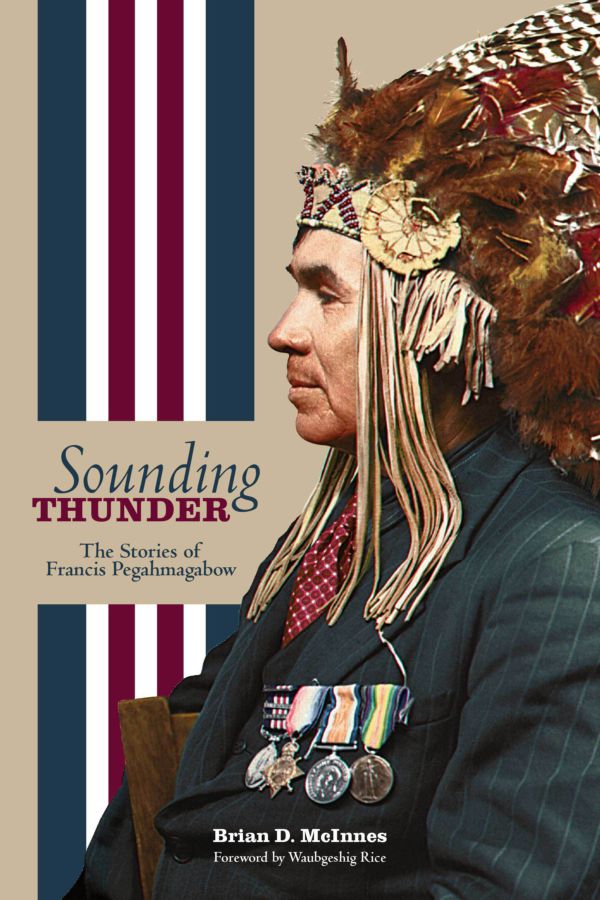
Sounding Thunder, The Stories of Francis Pegahmagabow
Much of the inspiration for the musical production, telling the story of Francis’ life, came from the book written by Brian D. McInnes and published with University of Manitoba Press.
Francis Pegahmagabow’s stories describe many parts of his life and are characterized by classic Ojibwe narrative. They reveal aspects of Francis’s Anishinaabe life and worldview. Interceding chapters by Brian McInnes provide valuable cultural, spiritual, linguistic, and historic insights that give a greater context and application for Francis’s words and world. Presented in their original Ojibwe as well as in English translation, the stories also reveal a rich and evocative relationship to the lands and waters of Georgian Bay.
In “Sounding Thunder”, Brian McInnes provides new perspective on Pegahmagabow and his experience through a unique synthesis of Ojibwe oral history, historical record, and Pegahmagabow family stories.
Reviews:
“Sounding Thunder is invaluable for those working in biographical, historical, Indigenous, military and political studies and the general reader. McInnes skillfully contextualizes his subject as one of Canada’s greatest war heroes as well as a member of his family, community, and Anishinaabe people.”
– Brock Pitawanakwat, Assistant Professor, Department of Indigenous Studies, University of Sudbury
“More than 20 years in the writing, Brian D. McInnes’s Sounding Thunder is an extraordinary book.”
– Tanya H. Lee, Indian Country Today
“We could all benefit from a lesson in the storytelling traditions of McInnes, Wasauksing, and the Ojibwe nation. I know I have. Do yourself a favour: buy this book. Read it, enjoy it, and learn.”
– Robert J. Talbot, The Canadian Historical Review

The Dialogues
THE SONG OF FRANCIS PEGAHMAGABOW
Newly published as of May 7, 2024.
In The Dialogues: The Song of Francis Pegahmagabow, award-winning author Armand Garnet Ruffo brings to life not only the story of the famed WWI Indigenous sniper, but also the complexities of telling Indigenous stories. From Wasauksing (Parry Island) to the trenches of WWI to the stage, Ruffo moves seamlessly through time in these poems, taking the reader on a captivating journey through Pegahmagabow’s story and onto the creation of Sounding Thunder, the opera based on his life. Throughout, Ruffo uses the Ojibwe concept of two-eyed seeing, which combines the strengths of western and Indigenous ways of knowing, and invites the reader to do the same, particularly through the inclusion of the Anishinaabemowin language within the collection. These are poems that challenge western conventions of thinking, that celebrate hope and that show us a new way to see the world.
TEACHING RESOURCES

The Indigenous War Heroes Project explores the experience of First Nations soldiers and veterans such as Sergeant Francis Pegahmagabow, the most decorated for bravery historical Canadian Aboriginal serviceman.
Indigenous men and women have long contributed to the efforts of the Canadian military. Developed by the Wasauksing War Hero and Native Veteran’s Educational Awareness and Commemoration Project, the lesson plans, stories, and photos included here provide educators and students with a framework and resources for better understanding and celebrating the past and continuing contributions of Native Canadian soldiers.
Indigenous War Heros Curriculum Website
